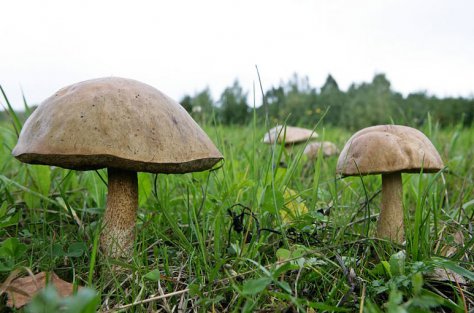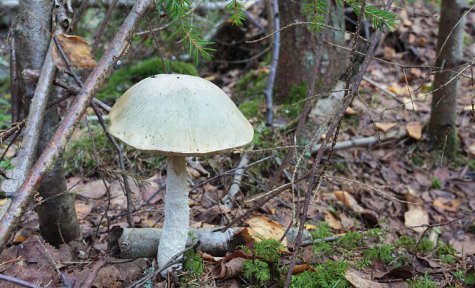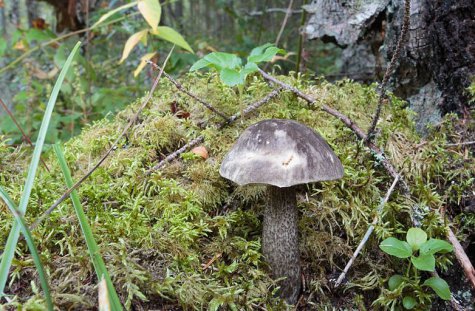Boletes at birches
Photos Arne Ader
Translation Liis
Birch boletes
Birch bolete; Rough-stemmed bolete Kasepuravik Leccinum scabrum
White birch bolete; Ghost bolete Valge puravik Leccinum holopus
Mottled bolete Kirju puravik Leccinum variicolor
Rather similar mushrooms. The first two species are edible, the mottled bolete is a tasty treat.
Birch boletes are our most common boletes; they can appear in massive amounts at times. They grow in broadleaf as well as mixed forests, in wooded meadows and scrubs and in parks, but only close to birches.
The mushroom caps may be coloured in quite different shades of brown and feel soft to the touch. The tubes under the caps are a natural white as well as the stem that has brown or even black scales. No colour change will appear on a cut surface of the white, soft flesh.
White or ghost bolete
Found in humid or even wet habitats.
The ghost bolete is the most common species in our bog forests, growing at bog verges and even in marshes. We can find them in large numbers near moor or downy birches.
The whitish cap is usually ”mushroom slimy”, and on older specimens turns slightly green at the cap edges. The tubes on the underside are greyish white, stem white, with greenish stains on older specimens.
Mottled bolete
The mottled bolete is a good edible mushroom; habitats humid forests, bog verges, wooded meadows. All the above mushrooms must be close to birches and with warm weather they can be found until November.
The cap is velvety black-brown and sticky. The little tubes on the underside are whitish but turn slightly pink on touching. The stem is white with black scales and back at home you will notice that the cut surface of the foot has turned blue-green.
NB! Only pick mushrooms that you really know.











